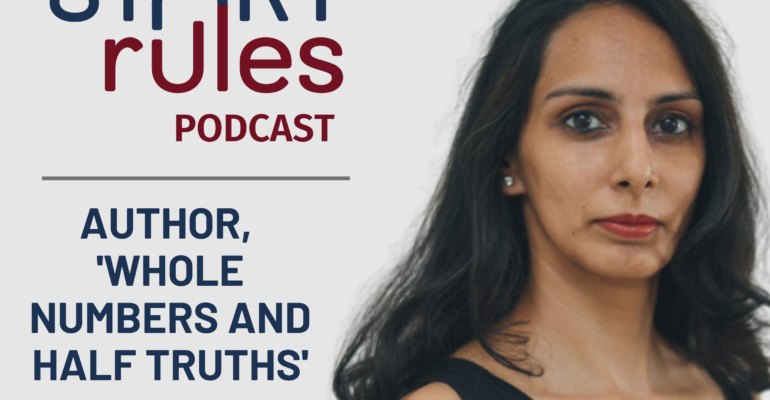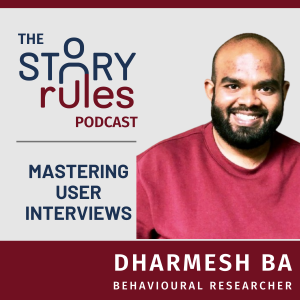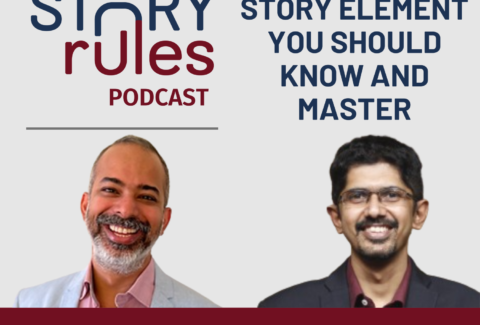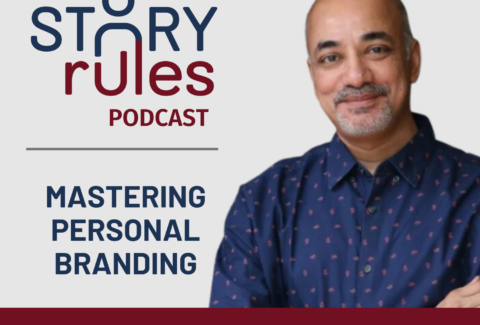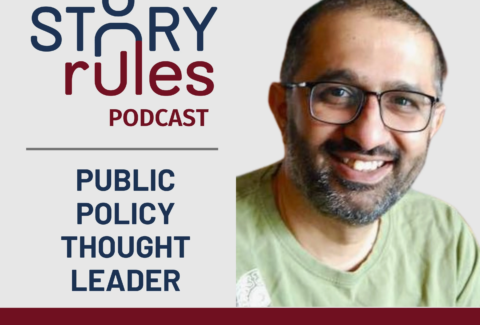E20: Rukmini S – Understanding India through data
I’m pleased to present a podcast episode with Rukmini S.
Rukmini is an eminent data journalist and author of ‘Whole Numbers and Half Truths’ a seminal book that looks at India through the lens of data.
Quick – answer whether these questions are True or False:
1. Delhi has the highest rate of crimes against women in India
2. Most of India’s migration is rural to urban
3. UP is safer for women than many big states as per an NCRB report
4. India has a large middle class
5. You are a part of that middle class
If you answered ‘True’ for any of the questions above, you need to read Rukmini’s book.
I teach how to craft narratives with data and one of the things I used to take for granted was the ‘data’ part. Earlier on the podcast, when I’d interviewed Brent Dykes (author of ‘Effective Data Storytelling’), we discussed the importance of ensuring that the data part of the equation is thoroughly vetted and not taken for granted.
And if you aren’t rigorous about getting the right data, you end up with narratives that may be divorced from the truth. Just like those True/False statements above.
But if those statements are not true, then what is the truth?
As per Rukmini’s book, the answer is, um, complicated. In a series of ten illuminating chapters, she covers a wide range of topics about India – from crime to education to income, to eating habits to how we vote, how we fall ill and how do we fall in love and get married – and deftly unveils a truer picture of our country.
In this conversation, Rukmini shares her approach to researching and writing the chapters. She offers a nuanced take on India’s unique data architecture and why it’s in all our interests to safeguard and nurture it. She also elaborates on the need for better communication and storytelling of data findings, especially if they seem to contradict the audience’s perception based on lived reality. Finally, she shares her productivity approach of getting writing done during the pandemic despite being a parent to two young kids!
Let’s dive in.
As always, I’m sharing some lightly-edited extracts from the conversation – tagged under ‘the 3Ps’ – The Philosophical, the Practical, and the Personal:
1. The Philosophical:
a. It’s not enough to just publish the data; someone also has to build the ‘story bridge’ connecting the data to the general public
Rukmini and I discussed the importance of storytelling once data is published.
Ravi: …in some of these other situations where the data that’s coming out (showing) the fact that real incomes are coming down, or wages have come down – what happens when, for not just the government but the public at large – the data that comes out contradicts what they perceive as their lived experience… (and they react) that, “How can you say wages are coming down? I have been paying more salary to XYZ.”
So when that happens I think there is a gap that opens between lived experience and data, and someone has to fill that gap. Ideally, people with lived experience should grapple with the data and figure it out (themselves). But given the polarized times we live in, is that sometimes a role for the data provider to become a bit of a storyteller and try and bridge that gap? To say that, “I know this what you feel; I know you feel that Uber and Ola drivers are coming and there’s a gig economy, but here is how this survey actually includes that also.”
So to reconcile with some of these possible arguments, do you think that the data providers themselves should take on the responsibility of bridging that gap?
Rukmini: Absolutely. I think if there is this response, and if there is outrage to data by people who feel that it doesn’t accurately reflect reality then instead of reflexively blaming those people for being oblivious or choosing to not accept what reality is, I do think it reflects on a failure of those communicating the data. If the process and the methodology for collecting the data isn’t clearly explained, it becomes that much easier to bat that data away. I find that the best estimates we have on consumption expenditure which show that in 2017-18, if you spent more than 8,500 Rupees a month as an individual it puts you in the top 5% of urban India. That’s something that people often push back against, find unbelievable, or want to say that “There are so many people I know who are spending this, that; you can’t tell me I’m in the top 1% of the country”, (I think that it) comes from us not being able to properly explain how these numbers were calculated and what goes behind it. Explaining to people “Is your objection that this is being missed? Let me show you how it is actually captured in the data,” “There’s all this black money – let me tell you how consumption doesn’t mean that black money isn’t captured.” I completely believe that there’s a failure of communication rather than a refusal to accept reality on people’s parts.
b. Go into the research phase with questions, not hypotheses
Rukmini is careful about not having pre-conceived notions about the data when she begins her research:
Ravi: Let’s start with the research process which precedes the writing one. When you are going out to try and answer a few questions in your mind like how much crime is really there? Or how much do Indians really earn? What do they spend? etc., there is this dichotomy or this tussle that I’ve always faced between having a hypothesis about the data that you want to research – which is useful, (because) if you don’t have any hypothesis then it’s just overwhelming (to figure out) what questions you want to answer and even if you get some insight, is it surprising or not? If you have a hypothesis, you can compare against it. That’s one; the other side is that if you go in with a hypothesis then confirmation bias kicks in and you only look for data (pertaining to that hypothesis). How do you balance this challenge out?
Rukmini: I think I go in with questions rather than hypotheses. I know that that is the foundation of a hypothesis, and I don’t have complete knowledge on most things, so I go in with questions because I do not know the answer to those things. I was interested in what research showed on the likelihood of crime being unreported. The universe of official statistics means that the only numbers that are there are crimes that were reported, while all of us know anecdotally that a lot of crime goes unreported. Of course, you could go in with a hypothesis that the crimes against women which we would imagine in India tend to carry with them social stigma, the notions of shame and honour, would be far more likely to be under-reported. Instead, I tried to go in with the question of what crimes are more likely to be unreported without bringing in priors. I truly think this comes out of a sense of “I don’t know the universe of what crime in India looks like”; I have an interest in understanding sexual crime because that is an area I’m interested in, but I wouldn’t have any pretensions of understanding what the universe of crime in India looks like. It’s not something I’ve studied, it’s not something there’s good research on. So, it really was a question rather than a hypothesis there and what I ended up finding by looking at some studies that are referenced in the book, is that the crimes most likely to be under-reported are those involving theft and property, and not violent crimes to the body. This might not always be replicable across contexts, and might not universally be the case, but this direction comes from going in with an open question. Otherwise, what I would have done is to try and purely look at studies that look at the extent of under-reporting of crimes against women in different contexts. This helps you zoom further and further out. I think that helps people to really understand what a universe looks like rather than a subset of what you’re looking at. I do think that is what I typically go in with.
This is similarly the case with COVID as well, which is something that I was flying blind with when I was reporting, not having a background in either health or science reporting. What I did in that particular case, which preceded the book, was that I started a nightly podcast in the early days of the pandemic, literally just for me. I recorded on my phone and put it out on SoundCloud without any publishing aims at all, and every day (there) was an open-ended question to which I truly did not have an answer. The more we are able to be upfront with ourselves and with other people about not knowing answers, and going in with a genuine spirit of questioning – the more we are able to come back with a broad set of answers rather than things that either confirm or do not confirm our priors, but are still very much based around our priors. I think that just makes for a much more interesting and wider scope of enquiry.
c. Let the data drive your narrative, not the other way around; also be ok with not having a ‘highly certain’ conclusion
Ravi:…(so) you’ve got a bunch of findings, and you’ve broadly thought of the chapter theme. Can you walk me through the steps or the process of actually structuring a chapter? Broadly, there could be two ways – one way could be to dump all your thoughts or ideas on a piece of paper or Word document and then make sense of it like a jigsaw puzzle, or do you end up directly writing in a stream of consciousness kind of way? What’s your approach?
Rukmini: I usually work from a skeleton out. I try to make sure that I have a sense of the rough ideas I want to cover, and that brings coherence to how the information is organized. As you can imagine, and as would be the case for most people writing books, the information is vast. Deriving meaning out of it seems like a hard thing for me to do. I would much rather dwell on the research and what’s in there, decide on what the structure should be and then pull the information from there. What that also ends up doing, is that it doesn’t become a case of the tail wagging the dog because sometimes the way you organize the information takes you in a narrative direction that’s really more an artefact of how you’re coming and reading all of it, rather than how you’ve taken yourself out and thought independently about it. I try to ensure that getting out of the information, thinking independently about the structure, then going back to the information I’ve amassed is something I try to do. I also sometimes have a few key questions I want to answer, and I try to make sure I get to some of the points of “But what does this not answer?” “What does it not tackle?” “What does it leave out?”
I don’t know how much this comes through in the book, but one thing I try to do in general and talk to people about is to try and move away from a need to project certainty about things we aren’t certain about. A lot of journalists feel obliged to come up with final statements of fact about things that aren’t always fully known, so I do try to make sure that there’s space to question all of that, to ask whether this is the full, final truth.
2. The Practical
a. Recruit support from relatives and friends for finding time for writing. Also deadlines help!
Rukmini managed to write a whole book while having two small children at home!
Ravi: Are there any lessons you can share with other parents? It’s one thing to write as a non-parent, and it’s very difficult to find time for longer term goals and there’s always the urgent time whereas you say in other conversations – that one Lego piece can be found only by you. What would you do to manage distractions both from family and more importantly, your own (mind wandering?) Like when you get stuck on something, wouldn’t you be like “Let me just go and look at the news” or in my case, the cricket score for some time? How do you manage those?
Rukmini: No, I don’t claim to be immune to procrastination, but I will say that by being constantly overcommitted as I always am – both personally and professionally, and this was particularly the case for the book – the period of time that I had was it. There was no elbow room. If I missed working at that time on it, then I was not going to have time for large chunks. For the whole of 2020, right through the year, most of my work was happening early in the morning or late at night. My kids were even smaller then.
Ravi: By “early” – how early are we talking about, Rukmini?
Rukmini: 6 to 8 (am). I’d give myself 6 to 8 in the morning. I don’t work 6-8 in the morning anymore…the kids are back in school so life is sunnier. Perhaps, I could do journalistic work while also watching my kids because it required much less deep thinking but putting things together, making phone calls, sending emails, that sort of thing which I could do. As could the rest of the world – work with their kids around them. But I couldn’t work on the book while also watching my kids who were home with me all day. From January 2021 onwards, until May or so, I had babysitting off and on. Through the Indian summer of May 2021, my parents were here full-time, watching the children. If there are people out there who could get good quality work done while simultaneously watching their children then good from them! I couldn’t. The way for me to get it done was for me to be in a completely separate room with the certainty that a kind and competent person like my parents or my husband was watching the children. Better still, being in an entirely different house. I did a lot of the writing from a friend’s house who was also a journalist; she would also work from home, so we would just sit at our respective tables and work and only break for lunch. I do think having a lot of external deadlines over my head, perhaps because I’ve always been in a deadline-driven environment (helped me). In this case, the deadline that my parents were going to leave by the end of April or so, made me think I had to get it done while they were there. That’s what really helped me pack in the productivity.
3. Personal:
a. Reading a mix of fiction and non-fiction
Rukmini: In terms of influences, I think some of them are more on the fiction side than on the non-fiction side. I do read a fair amount of non-fiction but the writing that typically stays with me tends to be fiction. My favorite books (include) ‘A Suitable Boy’; I was recently reading Nikhil Menon’s ‘Planning Democracy’ on Mahalanobis and his role in the early days of planning. It’s a great book and the other book I recommend to people who want to understand the 40s and 50s is ‘A Suitable Boy’. That’s the book I go through to even think about that moment and all the feuding of the Princely States, that sort of thing.
I remember reading Upton Sinclair’s ‘The Jungle’ a long time ago, and being struck by how non-fiction can be moving as well. Another book that I enjoy very much is a Hindi book called ‘Raag Darbari’ which is a satire on a very specific moment in time and I think it is in some ways an embodiment of what non-fiction reporting probably showed at the time.
And those were some highlights of my podcast episode with Rukmini S, a deeply thoughtful, empathetic and thorough data journalist who is helping us understand our own country better.
A few things which stood out for me in the conversation
- Data matters. Let it not be suppressed or unfairly questioned, just because the findings are not palatable
- Communication matters. It is the responsibility of the data presenters and the wider data journalist community to explain data findings and place them in the right context
- Writing matters. I’m glad Rukmini took time from her schedule to write this seminal book and hope to read many more from her pen.
You can enjoy my conversation with Rukmini at your favourite podcast location:
Browser
Podcast apps: Apple Podcasts | Spotify | Google Podcasts | Stitcher | Podcast Addict | Pocket Casts
Happy listening!
Links:
– Rukmini S on Twitter, Instagram, Medium
– Her book – ‘Whole Numbers and Half Truths‘
– Her articles in The Hindu
If you find the content valuable, please rate and review this podcast on iTunes, Spotify, Google Podcasts, or wherever you listen to them (links above). It’ll help others like you discover these insights!
This podcast was hosted by me, Ravishankar Iyer. Audio editing by Kartik Rajan. Transcript creating and editing by Amisha Jha and all-round support by Sanket Aalegaonkar.

